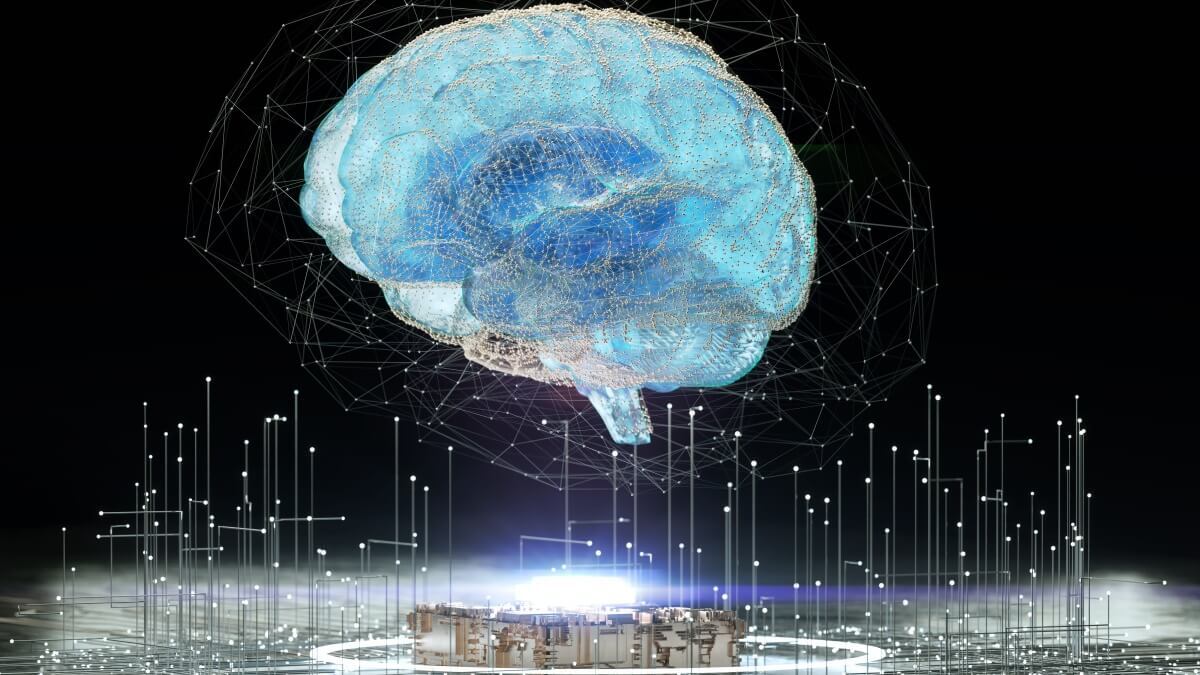Synthetic data can create fair and effective AI
Our society largely depends on the performance of technology like artificial intelligence.
As we prepare for a world of incredible innovation in smart home technology, robotics, autonomous vehicles, virtual reality, and augmented reality, one thing is clear – we’re inherently limited by traditional methods of training AI and Edge AI algorithms.
That’s why improvements in data gathering techniques and machine learning (ML) model training are so beneficial to many large sectors, such as education, entertainment, private businesses, and the government, to list just a few.
Additionally, the competition within these sectors is rapidly increasing, fueling the demand for datasets to be accurately and efficiently generated.
The problem is that generating datasets is limited by privacy concerns.
ML models can’t utilize any old dataset as ethical considerations and bias are issues that must be considered when training fair and effective AI and Edge AI.
Professionals and experts propose synthetic data as a revolutionary solution to these issues.
This article will explore synthetic data by discussing what it is, how it’s generated, its advantages and disadvantages, and how it’s relevant to people’s everyday lives and experiences with AI.
What is synthetic data?
Synthetic Data refers to datasets that are artificially generated by machine learning algorithms.
To create these datasets, data scientists use randomly generated synthetic data to mask confidential information while retaining statistically relevant characteristics from the original data.
Most excitingly, synthetic data has the power to transform the current AI and Edge AI development paradigm and disrupt conventional data-to-insight pipelines.
Synthetic data can deliver realistic, perfectly labeled datasets and simulated environments at scale, allowing data scientists to use it to overcome typical entry barriers to the AI market.
Synthetic data also allows AI developers to iterate quickly since training data can be created on-demand.
For these reasons, synthetic data is positioned to ease the complex landscape of accelerated time-to-market schedules.
For example, machine learning approaches to object recognition require enterprises to gather tremendous amounts of labeled, real-world data.
This can be a significant roadblock for a company’s AI deployment plans, as acquiring large volumes of data can be expensive and time-consuming.
On top of this, accuracy must always be considered because real-world data sets can potentially exclude certain groups of people.
They can contain errors that lead to inaccurate models of real-world scenarios, thus proving unsuccessful during testing. Worse yet, a poorly trained model can produce inaccurate or biased results once deployed in the field.
According to many industry experts, synthetic data is the way to obtain bias-free labeled data in record time.
Three common examples of synthetic data include:
- Synthetic images and videos
- Synthetic text
- Tabular synthetic data
Synthetic data can also be fully or partially synthetic or used in a hybrid manner.
Let’s explore these 3 types of synthetic data in more detail:
1. Fully synthetic data
With fully synthetic data, nothing is retained from the original data. This provides high privacy protection but lessens data accuracy.
2. Partially synthetic data
When it comes to partially synthetic data, high-risk or privacy-protected real data is replaced with synthetic values. This is usually done to complete original datasets.
3. Hybrid synthetic data
Hybrid synthetic data pairs random records from real-world datasets with close synthetic ones. It offers the benefits of both full and partial synthetic data, providing high utility and excellent privacy protection. The downsides of this synthetic data type include longer processing times and higher memory requirements.
How is synthetic data generated?
A real dataset generates synthetic data by modifying certain personal information (such as names, numbers, and license plates). This is done to maintain people’s privacy or anonymity.
Synthetic data is sometimes generated by what’s known as a conventional method.
Conventional methods refer to obtaining synthetic data by generating it with software or tools or partnering with a relevant third party.
Some software and tools, which can be found for free, fulfill testing needs but might not be enough to deliver the high performance a company is seeking. Additionally, choosing this method requires having the relevant IT resources in-house.
Synthetic data can also be made by using a generative model.
A generative model can learn from real data inputs. It creates synthetic data that closely resembles the original, authentic data. With this method, privacy is still protected, and results are incredibly accurate when compared to those that come entirely from real-world data.
Synthetic data and its many use cases
Synthetic data is commonly used to train AI and Edge AI for Face Recognition and detection purposes, specifically in 3D Images.
Another use case is in AI fraud prevention models used by banks, firms, and other financial industries. Here, synthetic data is used to predict possible fraudulent online activities.
The medical field also benefits from synthetic data by creating simulations of different illnesses (such as strokes) to predict patient outcomes and aid treatment.
Here are 3 of the most significant general use cases for synthetic data:
1. Testing and product development
Generating sufficient amounts of synthetic data is faster than conventional, real-world data gathering methods. This offers convenience, scalability, and efficiency.
2. ML/AI model training
Machine learning and AI models are only as good as their training data. Synthetic training data removes bias, improves model performance, and provides new explainability and domain knowledge.
All of this offers better training for algorithms, which, of course, creates high-performing AI and Edge AI.
3. Governance and Business
Due to the unique datasets created with synthetic data, AI and Edge AI models are trained to detect even the least possible scenarios or events in the real world.
This is tremendously valuable as it allows AI models to produce accurate insights into future events, including those smaller in scale and more elusive.
The advantages of synthetic data
Synthetic data enables many new opportunities and has the power to impact not only the AI community but also everyday users of AI and Edge AI technologies.
This is because everyone stands to benefit from fair, unbiased, readily available datasets and the array of highly sophisticated technologies and products that it can produce.
As a result, tech savvy-individuals and businesses need to learn about the advantages of synthetic data and the kind of technological future it promises to create.
It’s also equally important to examine its downsides so that any issues associated with it can be remedied in the future.
Here are some practical reasons why synthetic data can be more advantageous than real-world data:
Synthetic data has a cost advantage over real-world data
Utilizing generative models to produce data is more cost-effective than collecting real-world data.
Data-gathering consumes a lot of time and resources. With synthetic data, money, time, and resources are saved. This also allows new products to go to market smoothly and in record time.
Synthetic data protects people’s privacy
With the advent of technology such as Face Recognition, privacy is always one of the top concerns for developers and consumers.
With Synthetic Data, personal information is removed and untraceable, thus avoiding copyright infringements and privacy violations.
Synthetic data allows for easy labeling and control
From a technical standpoint, fully synthetic data makes labeling easy.
For example, suppose a picture of an outdoor recreation area is generated. In that case, it’s easy to automatically assign labels to people, trees, and animals without needing to hire anyone to label these objects manually.
Fully synthesized data can also be easily adjusted and controlled.
Synthetic data allows for simulated testing
The technology we use – devices, applications, software, systems, etc. are tested multiple times before they’re released to users.
With synthetic data, performance testing and training of new systems in different scenarios can be augmented or simulated.
This can be quicker and easier than real-world testing, allowing data to train on scenarios not represented in real data.
With synthetic data, rather than opting for costly real-world data to see if it creates the desired outputs, engineers can generate synthetic data to analyze and evaluate the performance of an algorithm.
Just imagine the possibilities!
Synthetic data and its limitations
It’s vital to remember that synthetic data depends on the real or authentic data engineers encode or input into a system, even if it’s used simply as a ‘jumping-off point.’
With synthetic data, the system merely studies the trends present in the real data.
The accuracy and reliability of synthetic data lie in the quality of the model that created it.
Some models are good at detecting the necessary statistical variables, but they do not necessarily cancel out other statistical noise for margins of error.
With these challenges, utilizing a verification server – an intermediary computer that performs identical analysis on the initial data is highly recommended.
Verification servers test and compare the authentic and synthetic data outputs to ensure the system has been properly trained. This also ensures the system isn’t generating the desired outputs due to assumptions or biases built into the synthetic data.
The main takeaway is that synthetic data still requires annotation to be done by humans and relies on real-world data.
With synthetic data, new possibilities are on the horizon
As we’ve explored, synthetic data is set to revolutionize how AI and ML models are trained and tested, thus expanding the capabilities of each of these technologies.
Because we live in such an intensely data-driven world, the innovation that synthetic data enables will be felt in many industries and by ordinary tech users.
Thanks to synthetic data, AI-enabled products can go to market quickly and with fewer hiccups.
New possibilities are on the horizon for AI and Edge AI, and synthetic data is undoubtedly one of the technologies at the helm.

